Robotic Process Automation (RPA)
RPA is a tool or method of automating manual, time-consuming, and complex, rule-based workflows using bots. RPA bots utilise the user interface to capture data and manipulate applications just like humans do. SnatchBot now offers automation tools.

Convert unstructured data to structured data with SnatchBot
SnatchBot provides RPA bots that can be used for business processes (back-end related) that can perform various tasks and transactions in databases, enterprise systems, and websites more efficiently than humans and other automation solutions by reducing cycle times. They are often used to either replace the people who interact with these applications or replace the responsibility to interact with them.

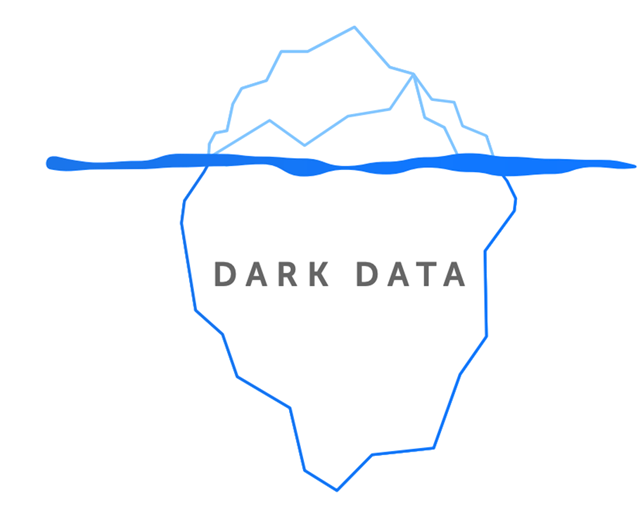 20% Visible
80% Hidden
20% Visible
80% Hidden
- Spreadsheets
- Databases
- CSV Files
- Invoices
- Contracts
- Purchase Orders
- Mortgage Apps
- Emails
- Images
- Instant Messaging Voice
- Video
Hybrid and intelligent RPA/Chatbot vision
SnatchBot can also provide robots that are traditionally used for back-end administrative IT work, can perform various tasks and transactions in databases, enterprise systems, and websites more efficiently than humans and other automation solutions by reducing cycle times.
They are often used to either replace the people who interact these applications, or replace the responsibility to interact with them.
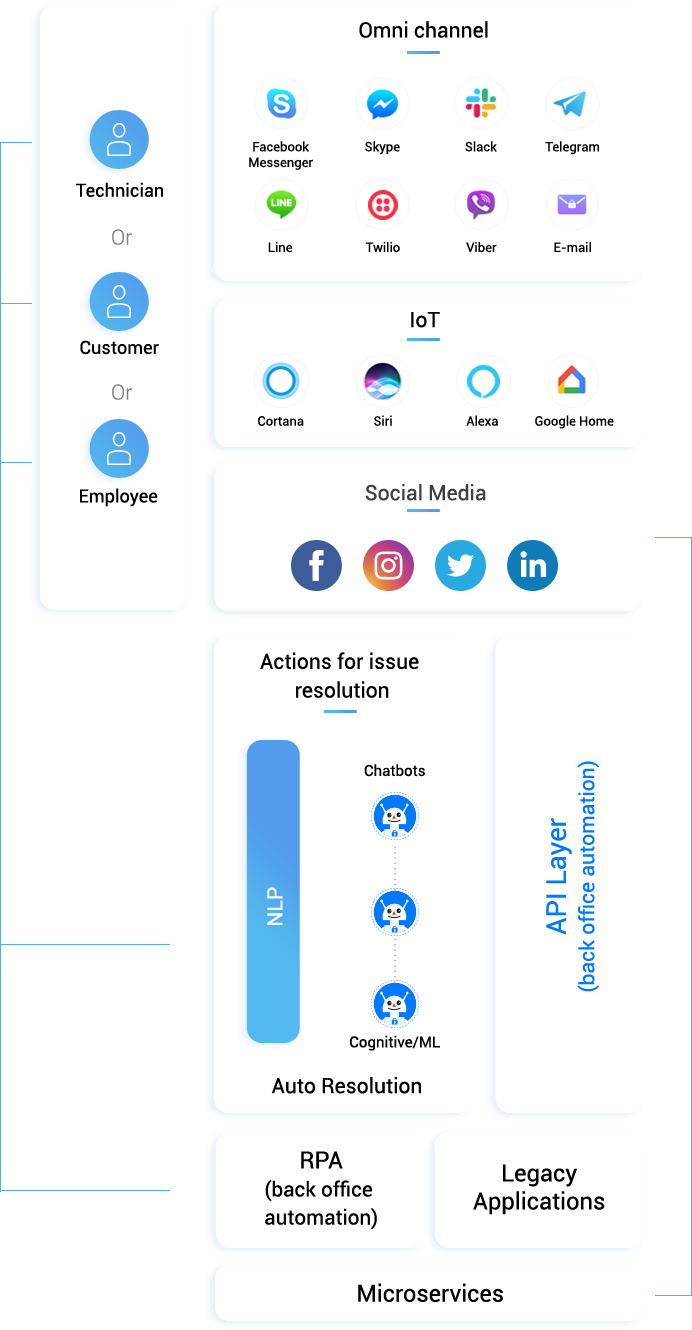
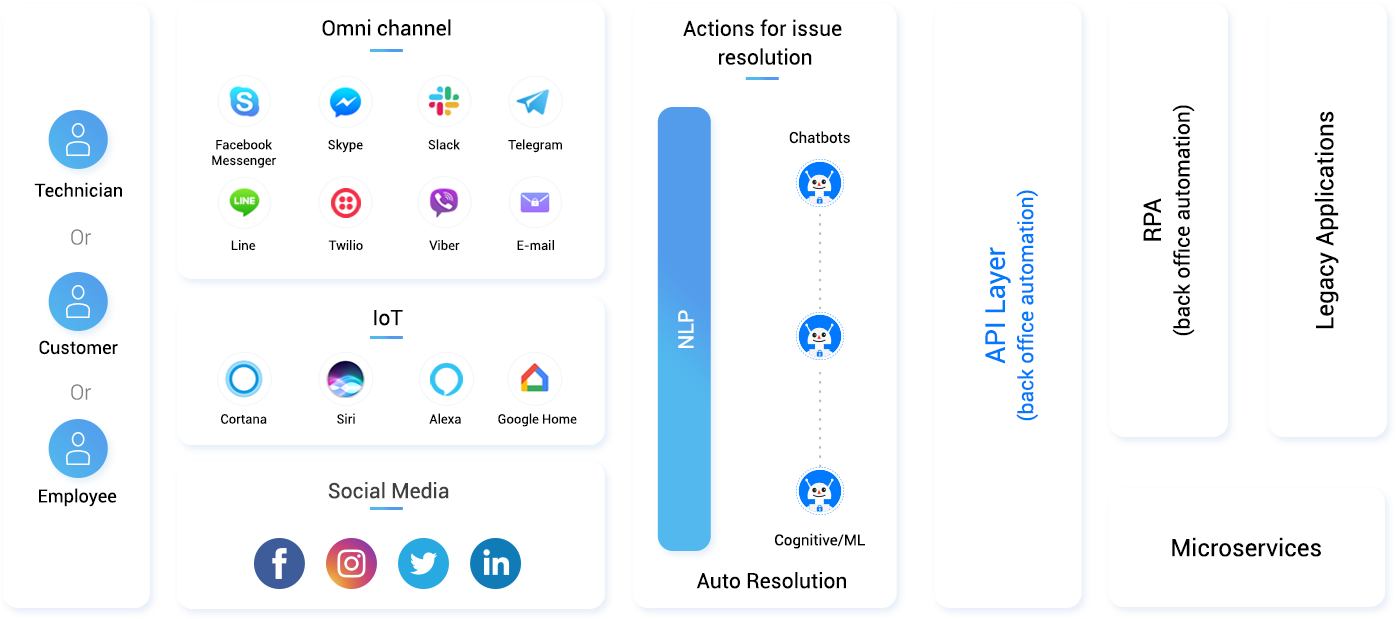
- Technician
- Customer
- Employee
- Facebook Messenger
- Skype
- Slack
- Telegram
- Line
- Twilio
- Viber
- Cortana
- Siri
- Alexa
- Google Home
(back office automation)
The NLP engine provides context, intent and sentiment identification to carry forward meaningful conversation with customer, technician or employee
Why RPA Is Used by Enterprises
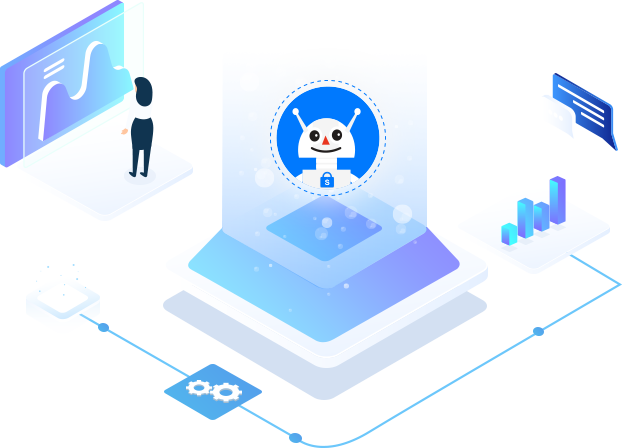
- To automate the way in which new information is added, improving user experience (by eliminating waiting times and allowing access on multiple channels) and reducing errors.
- Freeing staff from laborious data entry tasks and allowing them to focus on more complex tasks.
- To use modern NLP tools to ‘read’ older data, restructure it and make it available for future systems.
- To cross silos: RPA mechanisms allow automation at a high level, which overcomes lower level separation of data sources.
- To eliminate the need to build APIs or modify existing systems by bypassing APIs.
RPA Bots built on the SnatchBot platform can:
- Fill in forms
- Copy and paste
- Read and writing databases
- Move files and folders
- Login into web/enterprise applications
- Open email and attachments
- Follow if/then decisions/rules
- Collect social media statistics
- Extract structured data from documents
- Make calculations
- Connect to system API
- Scrape data from the web
RPA Technologies
-
Screen ScrapingScreen Scraping is an important part of data migration and integration scenarios. It enables modern apps to talk with legacy apps that do not offer an API and is the complement to the data entry side of automation. Screen scraping comes to the rescue in many business scenarios.
-
Desktop AutomationIf you just copy a few fields from an application and paste them into another application, import sales data from an Excel spreadsheet and fill out an online form, it is already time-consuming, tedious, and error-prone. It is time to automate this process.
-
Web AutomationAutomate data entry on web forms. Form filling, screen scraping, data extraction and transfer between applications, website testing and periodical report generation are major common tasks that can readily benefit from web automation.
-
Excel AutomationWorking with Excel poses challenges since the usual way to automate tasks requires to be proficient in VBA. Today’s working environment is multi-application focused, with data constantly being transferred between applications. Migrating and integrating data into platforms can, therefore, become troublesome, even while working with applications that can import and export files
Common Automation Examples
Like chatbots, RPA can be a powerful tool for digital transformation by providing the following benefits:
- Reading and writing data
- Data extraction and migration
- Sorting data and deleting duplicate rows
- Comparing columns
- Integrating with other applications and databases
- Retrieving and creating workbooks
- Running analysis reports
- Filling in forms with data from Excel spreadsheets

Examples of tasks alleviated by RPA robots
- Transferring data from one system to another
- Dispute resolution
- Order updates
- Customer Order Processing
- Compliance reporting
- Credit card applications
- Incoming Customer email query processing
- Patient registration
- Data cleansing
- Customer complaints processing
- Payroll and claims processing
- Website scraping
The Benefits of RPA
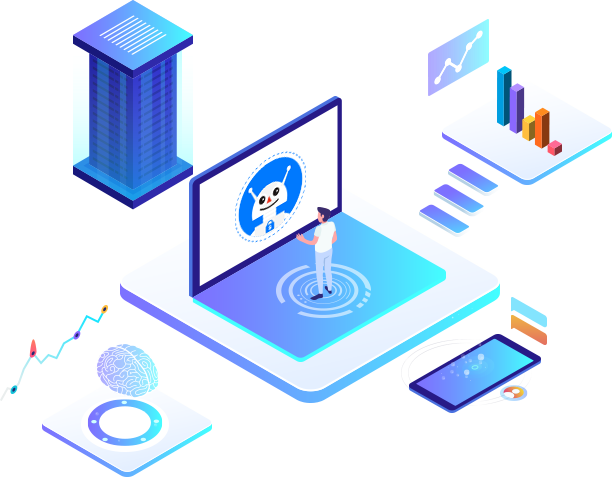
Like chatbots, RPA can be a powerful tool for digital transformation by providing the following benefits:
- Reduce labor & operational costs
- Increase processing speed
- Improve customer experiences: Extend service hours
- Reduce human errors: Rapid, non-invasive integration & deployment
- Provide comprehensive operational visibility
- Increase security & compliance
Start you RPA journey now?

